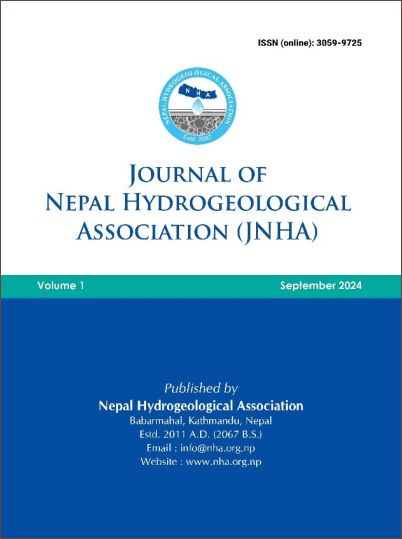GIS-Based analysis of landslide susceptibility in Madi Watershed: Nepal
DOI:
https://doi.org/10.3126/jnha.v1i1.78225Keywords:
Landslide, Madi watershed, susceptibility, vulnerability, weighted overlayAbstract
Landslides are known as the most calamitous natural hazard in Nepal, posing significant threats to human lives, infrastructure, and natural resources. The main objective of this study is to use the Weighted Overlay Method (WOM) in ArcGIS software to generate a map of landslide susceptibility in the study area. Landslide susceptibility assessment is essential to recognize the high-risks areas, which in turn will help solidify land-utilization planning decisions, risk minimization, and disaster prevention measures. The WOM is produced using raster-based Geographic Information System (GIS) employing characteristics such as aspect, curvature, elevation, geology, NDVI (Normalized difference vegetation index), rainfall, distance from rivers, and slope. The analysis of the obtained results shows that slope, geology and rainfall have the greatest influence on landslide occurrence, particularly in the northern region. The study area was classified into four classes of vulnerability zones based on the analytical results. The results showed that increasing elevation, precipitation, non-vegetative land and slope influence the frequency and magnitude of landslides. Consequently, 0.003 percent of total area of watershed were classified as “Low Susceptibility” to landslides, whereas the “Very High Susceptibility” has coverage of 3.447 percent. Similarly, "Moderate Susceptibility" covers 25.703% of the total area and "High Susceptibility" covers 70.847% of the watershed's total area. The areas of high and moderate risk mainly consist of hilly terrain, due to steep slopes and gravity. The region of moderate vulnerability has primarily located in mountainous regions, attributable to hilly vegetation and cloudy weather conditions. In general, aspect with Southeast to Southwest part was more vulnerable to landslides along with increased rainfall and elevation factors with slope degree heightened the area's vulnerability."




